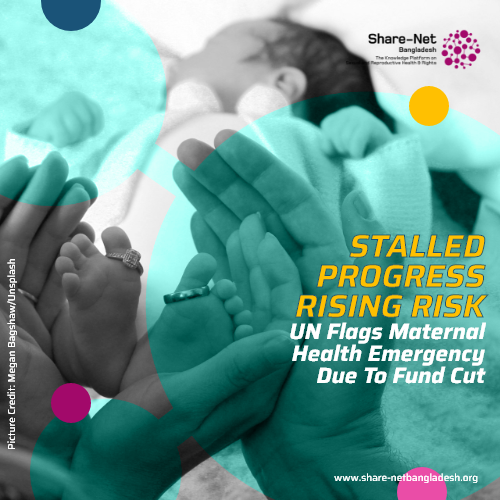Stalled Progress Rising Risk: UN Flags Maternal Health Emergency Due To Fund Cut
Despite a 40% drop in global maternal deaths since 2000, the United Nations has sounded the alarm over stagnating progress and the growing threat of backsliding, driven by widespread aid cuts and shrinking reproductive health investments.
In a new report released on Monday, the World Health Organization (WHO) revealed that approximately 260,000 maternal deaths occurred in 2023, equating to one every two minutes. While the long-term trend shows improvement, the report emphasises that gains have flatlined since 2016 — a worrying signal amid global crises and funding shortfalls.
“The pace of progress has slowed to a near standstill,” said Pascale Allotey, Director of WHO’s Department of Sexual and Reproductive Health and Research. “In some regions, we are already sliding backwards.”
The report stresses that most maternal deaths are preventable, and occur due to inadequate access to essential sexual and reproductive health services — including care during pregnancy, childbirth, and postpartum periods. Disruptions to these services, exacerbated by funding cuts, are putting millions of women and girls at risk.
Global aid cuts and maternal health crisis
The situation has worsened significantly after major global aid cuts, particularly from the United States, once one of the largest contributors to sexual and reproductive health funding through USAID. Since President Trump’s return to office in early 2025, most U.S. foreign aid has been frozen — creating what WHO describes as an “acute shock” to already fragile health systems.
“Countries haven’t had time to plan alternatives. Essential services are being disrupted,” warned Bruce Aylward, WHO’s assistant director-general.
Health centres are closing, health workers are being lost, and supply chains for critical medicines — such as those treating haemorrhage, malaria, and pre-eclampsia — are breaking down. These disruptions directly affect maternal survival rates, especially in low- and middle-income countries.
The Covid-19 pandemic gave a glimpse into the consequences of failing health systems. The report cites a rise in maternal deaths from 282,000 in 2020 to 322,000 in 2021 — an increase of 40,000 deaths, driven by healthcare disruptions and the pandemic’s direct impact on pregnancy.
“This shows how critical it is to ensure that maternity services are protected during any emergency,” said Jenny Cresswell, lead author of the WHO report.
Widening global inequalities
Sub-Saharan Africa remains the epicentre of maternal mortality, accounting for 70% of all maternal deaths worldwide. While some progress has been made in the region, the report finds persistent gaps in maternal health across North Africa, Asia, Europe, and even North America.
The United States, in particular, is experiencing an increasing maternal mortality trend, despite having comparatively low rates overall. Experts note it is too early to gauge the impact of the 2022 Supreme Court ruling that removed federal protection for abortion rights, but the trend raises concerns about shrinking reproductive rights and their consequences on maternal health.
WHO Director-General Dr. Tedros Adhanom Ghebreyesus stressed,
“While this report shows glimmers of hope, it also highlights how dangerous pregnancy still is in much of the world today.”
He added that beyond maternity care, women’s sexual and reproductive rights must be strengthened globally to reduce maternal mortality effectively.
As the world faces rising instability, the message from WHO is clear: complacency in maternal health could be deadly. The global community, especially high-income countries, must reinvest in essential reproductive health services before hard-earned progress is lost.
Source: BSS
Picture Credit: Megan Bagshaw/Unsplash



